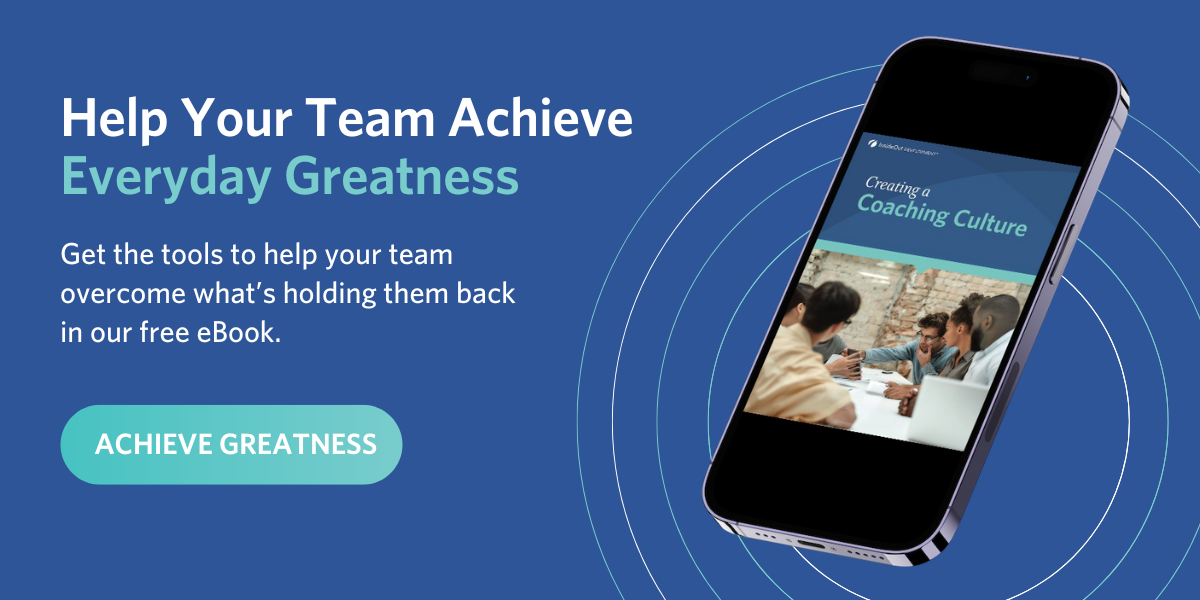Advancing in your career can seem daunting, but it doesn’t have to be.
Whatever your goals may be — whether you want to get a promotion, start a business, or move into a new role — the benefits of implementing coaching techniques aren’t talked about enough.
Career advancement is synonymous with personal growth. Coaching techniques help you take an honest look at yourself and where you can improve, and give you actionable steps to grow and learn.
Let’s talk about the significance of career development coaching and how it can catapult you towards achieving your greatest successes.
The Power of Coaching in Career Development
Leveraging coaching as a tool can significantly impact your professional growth trajectory. Career development coaching, often guided by a coach, involves setting personalized goals, skill discovery, and career advancement planning.
Effective coaching unlocks dormant potential within individuals and organizations. In career development, coaching acts as a dynamic bridge between current status and future goals, with two approaches: self-coaching and seeking external coaching.
Self-Coaching
Self-coaching is an introspective method where an individual uses personal reflection and self-assessment to uncover their ultimate career goals. It's about asking the right questions, setting clear personal goals, and holding oneself accountable.
While self-coaching is a powerful tool for personal development, it becomes even more effective when complemented by other perspectives from those who have achieved success themselves.

External Coaching
Seeking the guidance of a professional coach is a valuable element in the career development process.
A skilled career development coach brings expertise and a new perspective to the game, which often gives insights that might otherwise be overlooked with a self-coaching approach. It also provides a structured framework of development that supports continuous growth, both personal and professional.
The Role of Feedback in Career Growth
Feedback is an often overlooked element of career development coaching. There are two potential reasons for this:
- Both leaders and team members may be afraid to hear the truth about their performance.
- They simply don’t realize the importance of feedback as it pertains to career growth.
Constructive feedback needs to become a routine to truly see improvement. One of the hallmarks of a growth mindset is the eagerness to seek feedback. Rather than viewing feedback as a critique or a personal attack, individuals with a growth mindset see it as a valuable tool for self-improvement.
Actively seeking constructive feedback allows you to uncover blind spots you didn’t even know you had. It allows you to identify areas for improvement and chart a course for personal and professional development. It's truly one of the most proactive steps you can take towards becoming the best version of yourself.
Feedback in Professional Relationships

Feedback is a two-way street, and its potency amplifies when it becomes a consistent part of your professional relationships. When you’ve cultivated a culture of open communication, constructive feedback increases and strengthens the natural flow of collaboration.
Two things to note:
- When you give feedback, it's an opportunity to recognize and acknowledge strengths while providing tips for improvement.
- When you receive feedback, it's a chance for you to gain valuable perspectives, refine your skills, and even help strengthen your professional connections.
Constructive feedback, when delivered with empathy and received with openness, creates an environment that’s open, honest, and successful.
But remember — for this to happen, feedback can’t just be a one-time event. It needs to be continuously woven into daily conversations. Show your team that embracing feedback isn’t anything to be scared or anxious about. It’s simply another tool that helps us all bring forth our best selves.
Identifying Coaching Techniques for Career Success
Coaching techniques are an important component in developing strengths, skills, and overall goal clarity. It's not just about setting clear objectives but also about understanding the deeper motivations that drive these goals and aspirations.
A coaching culture helps to hone in on those short- and long-term goals. A few examples of coaching techniques are:
- Targeted and open-ended questioning
- Goal-setting exercises
- Following up for feedback
- Customized action plans
All in all, coaching techniques are a great way to define career goals and make sure they’re aligned with your values, strengths, and life purpose.
The Ultimate Coaching Technique for Career Development: GROW
According to the GROW® model, everyone has the potential to be great.
GROW (which stands for Goals, Reality, Options, and Way Forward) is a method co-created by Alan Fine that simplifies coaching, goal-setting, and implementation into actionable steps toward success. Each element of GROW can help you achieve your career goals and improve yourself, both personally and professionally.
Let’s talk about how to implement each element of the GROW model into your career development coaching repertoire:
Goal Setting
You can’t talk about effective Goal setting without also bringing in SMART goals:
- Specific: When implementing the GROW model for career development coaching, focus on being clear and specific with what you’re trying to achieve. This helps you determine what your goals are and why you want to achieve them.
- Measurable: Develop a way to measure your progress toward your goals. You’ll do this by identifying the key performance indicators (KPIs) to help track whether your daily tasks are helping you move closer to your goals or away from them.
- Achievable: Instead of telling yourself, “I’m becoming a CEO in one year,” begin by setting a more realistic goal, such as, “I’ll read 5 books on leadership development this year and consider enrolling in an MBA program.” These concrete steps help you stay on target and improve yourself at the same time.
- Relevant: Make sure that the goals you set align with your overall future vision. This helps others on your team be better equipped to help when needed and gives your goals a purpose you can understand.
- Time-bound: Give yourself a deadline for reaching your goal. This helps you to schedule and plan accordingly and puts your mind at ease.
Goal setting is an important first step and sets the stage for the other elements of the GROW coaching model.
Reality and Options
The Reality element signifies the importance of assessing where you currently stand in terms of achieving your goals. It’s taking accurate stock of what you need to improve and doing this through an objective, non-judgmental lens.
With Options, this is where you begin to brainstorm ideas on how to get from where you are to where you want to go.
This can be done collaboratively — and it’s actually the way we recommend approaching the Options stage. Seeking the two cents of your team or coaching development leaders can greatly enhance your results. Two (or more) brains are always more powerful than one!
Way Forward
Way Forward is the actionable plan chosen from the Options phase above. It gives you concrete steps toward achieving your goals.
Developing this clear Way Forward also instills ownership because the individual directly contributed to the creation of the chosen plan. From here, the steps toward your achievements are clear, easy to follow, and motivational.
Getting the Most Out of the GROW Model
Once you determine your Way Forward, know that it’s important to follow the path toward goal achievement, but remember not to become too rigid.
Just like with anything in life, changes, obstacles, or blocks can arise. This doesn’t mean you give up — it simply means you adapt certain parts of your plan, but you never abandon the goal itself.
This is where tracking and measuring data come in handy. It shows you what’s working, what’s not, and how you can improve the process.
Throughout this entire process, a coaching culture is a huge help. Often, people go at it alone, thinking that they have to accomplish things solo — putting a lot of pressure on themselves and often failing because of that.
A coaching culture helps teams support one another and provides valuable knowledge and perspectives to everyone involved.
Overcoming Challenges and Obstacles
Coaching techniques are there to make things easier for us, especially when we come across challenges and setbacks along the way.
It’s important to note that challenges aren’t always obvious ones. They can be as seemingly insignificant as distracting coworkers, negative inner self-talk, or last-minute deadline changes. At InsideOut Development, we call this interference, or anything that stalls our progress and gets in the way of us achieving our goals.
A way of battling interference is through a strong support system. Having a mentor or peers who can help you brainstorm solutions is invaluable. They’ll provide perspectives you may not have seen and help you reach solutions much faster than you would on your own.
What it comes down to is cultivating an InsideOut mindset. You are capable of a lot more than you realize. There’s potential within you that’s just waiting to be released, and that means not letting setbacks or difficulties prevent you from growing — they’re simply stepping stones on your journey toward success.
Becoming more fluid in your approach while staying dedicated to the overall goal is the framework that’ll help you achieve more than you thought possible.
Elevate Your Career With Coaching Techniques
Advancing in your career begins with continuous learning and self-improvement. The GROW model is an excellent method of setting and achieving your career goals. When coupled with a supportive mentor, team, or coach, you can increase your chances of securing long-term success in your career.
For tips, insights, and actionable steps to learning how to use the GROW model to reach your goals, download the free copy of Creating a Coaching Culture eBook.





